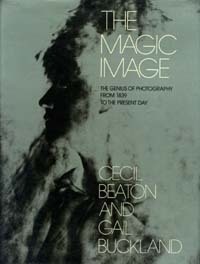Who Shot Rock will ROCK
On October 23, 2009, we’re launching a major exhibition, Who Shot Rock: Photographers of Rock and Roll.

Who Shot Rock will be guest curated by the distinguished photography historian Gail Buckland, who began her career in the early 1970s collaborating on a book with Cecil Beaton (The Magic Image: The Genius of Photography). I will design the exhibition and be the liaison between the Museum and Gail, and report here on the progress we make. As the exhibition is about 18 months away, I thought it would be a good time to give you a brief preview of how far along we are.
Gail has been researching the exhibition since 2006 and has met with over 100 rock and roll photographers to review their work. Often, she has been able to identify vintage prints from their personal archives during these visits. And so this exhibition will provide an opportunity for museum visitors to see these original prints as well as learn the names of the photographers who shot some of the world’s most iconic images. For example, Jimi Hendrix with his burning guitar at the Monterey Pop Festival in 1967, photographed by Ed Carraeff. There will 175 works in the exhibition and we are just beginning to clear image rights, so you’ll have to wait for a preview of these great works nearer to the end of the Summer.
The exhibition will cover the rock and roll era from the 1950s to the present and will be organized in 6 sections with the following working titles: Behind the Scenes; Live Performances; Crowds and Fans; Portraits; Young Artists; Conceptual Images & Album Covers. Together these will represent the varied approaches to rock and roll photography . . . which is as varied as the artists themselves. Though not a compendium of everyone in the history of rock, the exhibition will include Ike Turner, Little Richard, Rolling Stones, The Beatles, Led Zeppelin, The Ramones, Tina Turner, and Amy Winehouse. And of equal note, the photographers William “Popsie” Randolph, Barry Feinstein, Mick Rock, Richard Avedon, David Gahr, Pennie Smith, Jean-Paul Goude, Henry Diltz, and Max Vandukul.
A final checklist is near, and we are about to send out loan forms. Gail will be writing the book through the Summer. Once the loan forms have returned by Summer’s end, the design of the exhibition will begin.

Matthew Yokobosky came to the Brooklyn Museum as an exhibition designer in 1999, and was appointed Chief Designer in 2002. He earned a B.A. in film studies and design from the University of Pittsburgh in 1986, and, one year later, moved to New York to work at the Whitney Museum of American Art. While at the Whitney, Yokobosky held many positions, including exhibition designer (1995 Biennial, The American Century (1999)) and associate curator of film and video (No Wave Cinema, 1996; Fashion & Film, 1997). During the same period, he designed theater productions (Ping Chong's 1989 show Brightness, which won a Bessie award for set and costume design) and books (Yoko Ono: Arias and Objects, 1991). For the Brooklyn Museum, he has designed the critically acclaimed Luce Center for American Art (2002/2005, permanent installations), as well as over 30 temporary exhibitions including Hiroshige: 100 Famous Views of Edo (2000), Basquiat (2005), Annie Leibovitz (2006-7), and I Wanna Be Loved by You: Photographs of Marilyn Monroe (2004), which he also curated.
